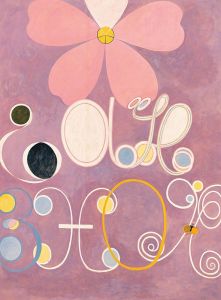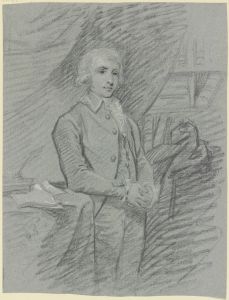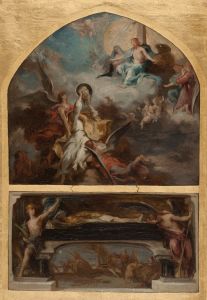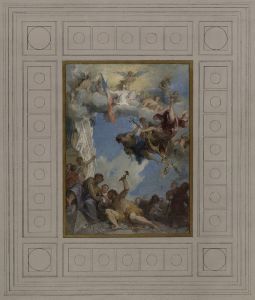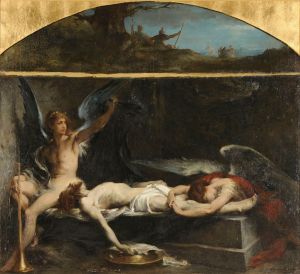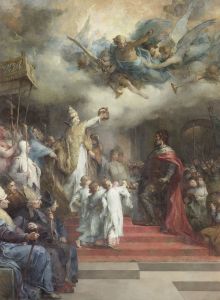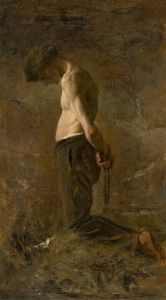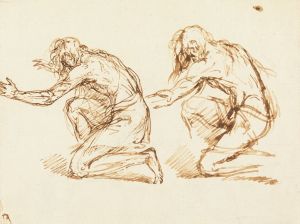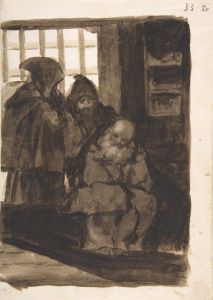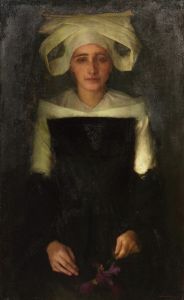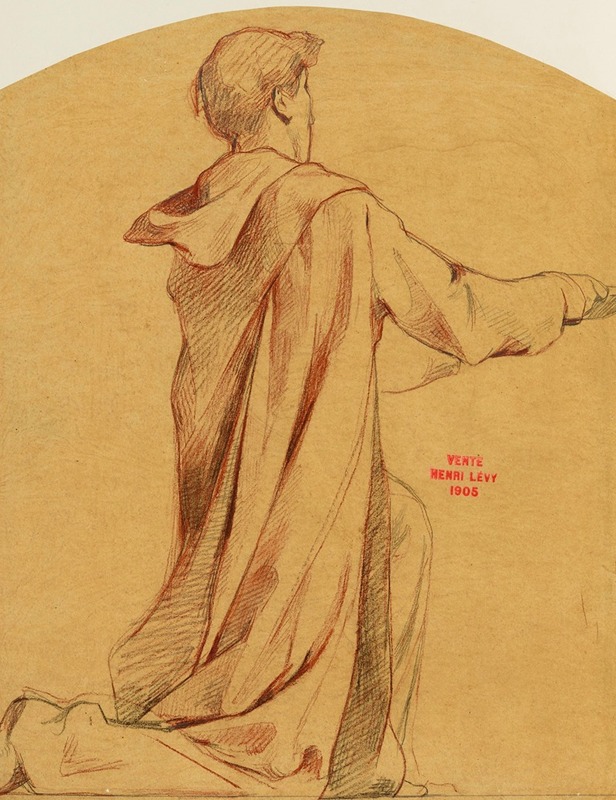
Etude d’un moine agenouillé, de dos
A hand-painted replica of Henri Leopold Lévy’s masterpiece Etude d’un moine agenouillé, de dos, meticulously crafted by professional artists to capture the true essence of the original. Each piece is created with museum-quality canvas and rare mineral pigments, carefully painted by experienced artists with delicate brushstrokes and rich, layered colors to perfectly recreate the texture of the original artwork. Unlike machine-printed reproductions, this hand-painted version brings the painting to life, infused with the artist’s emotions and skill in every stroke. Whether for personal collection or home decoration, it instantly elevates the artistic atmosphere of any space.
Henri Leopold Lévy was a notable French painter of the 19th century, recognized for his contributions to religious and historical painting. One of his works, "Etude d’un moine agenouillé, de dos," which translates to "Study of a Kneeling Monk, from the Back," exemplifies his skill in capturing religious themes with a focus on human emotion and spiritual introspection.
Lévy was born in 1840 in Nancy, France, and he studied at the École des Beaux-Arts in Paris, where he was a student of François-Édouard Picot and Alexandre Cabanel. His education and training under these prominent artists of the time significantly influenced his artistic style, which is characterized by a blend of academic precision and a romantic sensibility.
"Etude d’un moine agenouillé, de dos" is a study piece, which suggests that it may have been a preparatory work for a larger composition or a standalone exploration of a religious subject. The painting depicts a monk kneeling in prayer, viewed from behind. This perspective invites the viewer to contemplate the monk's devotion and the solemnity of his spiritual practice without the distraction of facial expressions. The focus on the back of the monk emphasizes the posture of humility and submission, common themes in religious art.
Lévy's choice to depict the monk from behind is significant in that it allows the viewer to project their own interpretations and emotions onto the figure, creating a universal symbol of piety and reflection. The use of light and shadow in the painting highlights the contours of the monk's robe, adding depth and a sense of realism to the figure. This technique is indicative of Lévy's academic training and his ability to convey texture and form with precision.
Throughout his career, Lévy was known for his religious and historical paintings, often drawing inspiration from biblical stories and classical mythology. His works were well-received in the Salons of Paris, where he exhibited regularly. Lévy's paintings are noted for their dramatic compositions and the emotional intensity of his figures, qualities that are evident in "Etude d’un moine agenouillé, de dos."
While specific details about the creation and current location of "Etude d’un moine agenouillé, de dos" are not widely documented, it remains an example of Lévy's dedication to exploring religious themes through art. His ability to convey the spiritual essence of his subjects has earned him a place among the respected artists of his time.
Henri Leopold Lévy continued to paint until his death in 1904, leaving behind a legacy of works that reflect the religious and historical interests of 19th-century France. His paintings continue to be studied and appreciated for their technical skill and emotional depth, with "Etude d’un moine agenouillé, de dos" serving as a testament to his artistic vision and mastery.





